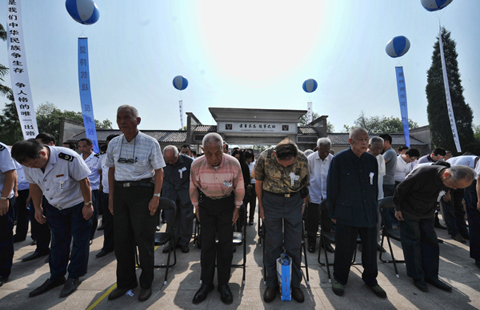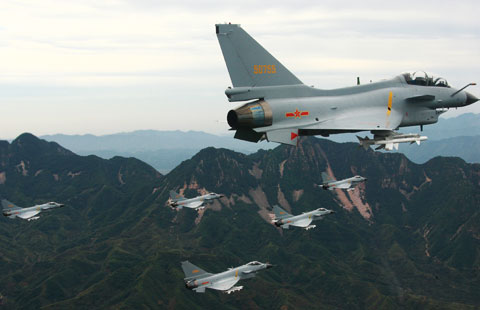4 challenges as recovery grinds to a halt
Updated: 2014-09-05 10:06
By Cindy Chung and Ben Chow(China Daily Europe)
|
|||||||||||

Tepid property market, tightening credit and decreasing infrastructure investment add up to slower growth
Over the past couple of months, strong signs have appeared that China's economic recovery has slowed.
The purchasing managers' index, industrial profit growth, retail sales and new loan figures all weakened compared with the May-June period.
They suggest that the strong recovery since the end of the first quarter - after economic growth had dipped to a multi-year low - may now have ground to a halt.
The latest statistics show that the world's second-largest economy has at least four main challenges to overcome if it is to achieve its yearly growth target of 7.5 percent.
The first is to tackle its tepid property market.
Since July, many cities have scrapped their restrictions on home purchases.
First-tier cities and dozens of other major cities have allowed residents to buy more than one home, and some have even loosened buying restrictions on residents from elsewhere in the country.
The moves apparently were an attempt to shore up the property market and spur the economy.
However, the policy changes have had only limited effect.
In Qingdao, a major city in eastern Shandong province, for example, the number of properties sold in August - the first month the purchase restrictions were removed - rose just 2.73 percent month-on-month to 2,254 units. On an annual basis, those sales represented a 20 percent drop.
Qingdao's August downward trend was mirrored nationwide, as property prices continued to fall for a fourth consecutive month.
And these sluggish sales come at a time of high inventories.
The national ratio of inventory to sales now stands at 5:1, compared with 2:3 in 2010, and it is expected to take some time for that growing inventory to clear.
Moreover, credit remains tight, with mortgage interest rates rising from 6.7 percent in the first quarter to 6.93 percent in the second - nearly a three-year high.
That combination of high numbers of unsold properties and tighter credit means the property market is unlikely to rebound any time soon, even with those loosening purchase policies.
The second major challenge China faces is a weakening in the growth of investment in infrastructure investment.
In the first half of the year, fast infrastructure investment growth - which accounted for 22.8 percent of fixed-asset investment - offset sluggish property investment, and turned out to be an economic savior for the government. But that trend is unlikely to continue in the second half of the year.
That growth in infrastructure investment was linked strongly to rising government budgets - but they also slowed visibly.
By the end of June, investment growth slowed to 15.5 percent from 19.7 percent the previous month. The downward growth trend continued in July, to 14.1 percent.
The latest figures show that infrastructure investment is lacking solid capital support from within government budgets. And non-government funding, too, appears to be tightening.
The slowing property market clearly represents a major hit to government tax revenues.
The effects of the austerity campaign, too, continue to affect corporate taxes, meaning local governments are running out of financial options to support infrastructure investment.
This means that investment, the savior of the economy, cannot lend a helping hand as it did in the first half.
The third area that needs close attention is exports, which many are hoping will replace infrastructure investment as an economic booster.
Although the country's export figures have recovered well since May, we believe the recovery is far from solid, and maintaining export growth remains a priority.
Chinese exports jumped 14.5 percent in July, but the increase was mainly the result of a combination of factors, such as foreign exchange rate fluctuation and the statistical effect of fake trading used to circumvent capital controls and to profiteer. The real export figures did not grow as much as many had expected.
The evidence of this comes from three sources: European and United States imports did not rise significantly in July and August; Europe's purchasing managers' index dropped; and Chinese container export figures also fell, reflecting toughening market conditions that are proving difficult to stabilize.
It is expected that exports may grow between 5 and 10 percent in the second half of the year, a significant improvement on the first half's 1.2 percent drop.
But at the same time, imports are expected to grow, meaning the net contribution of exports to GDP will be negligible.
Longer term, Chinese exports are unlikely to rise as fast as they did historically, hampered still by rising labor costs and the continued relocation of manufacturing from China by investors.
If exports continue to deprive the government of much-needed income, then economic loosening measures may be necessary - representing its fourth big challenge.
On the fiscal front, the government's room for maneuvering is limited, given that since the second quarter, it has increased spending dramatically.
By the end of June, the budget surplus stood at 548.4 billion yuan ($89.3 billion, 69.9 billion euros), 339.3 billion yuan less than the same period last year, meaning the government has less money to use for the rest of the year.
On the monetary front, however, it has some leeway.
It can continue to cut the required reserve ratio for banks and can resort to interest rate cuts if necessary.
But signs have shown that the central government will not frequently or massively use monetary loosening to spur the economy.
In the People's Bank of China's second-quarter report, it said credit and social financing growth was "rising rapidly" and that money supply was "growing markedly".
The wording showed the central bank likely thought that liquidity has been adequate.
With this understanding, targeted and selected reserve ratio cuts would be the government's preferred choice.
In fact, the potential effect of monetary loosening on the economy is not as visible as it was.
Last year, policy loosening that started in the second quarter helped boost economic growth for the rest of the year. But this year, the loosening adopted in the first quarter lasted for just those three months.
This shows the diminishing effects of such a policy, so the government may not be enthusiastic about returning to loosening. If that happens, liquidity will be a challenge.
Taking those four factors into account, achieving the country's 7.5 percent growth target will not be easy.
As the Chinese economy continues with its profound but painstaking structural transformation, and the global economic recovery continues to be uneven, slower growth will become the norm for China.
Given these conditions, the top leadership should not be bothered too much by how fast the economy will grow, but should focus more on reforms and restructuring.
As long as the labor market remains stable and the economic structure continues to improve, China should be able to sustain its economy on even slower growth.
It is being strongly suggested that the government set its growth target at 7 percent for next year to allow it more leeway in adjusting its policies.
The authors are analysts at Shanghai-based Universal Consultancy. The views do not necessarily reflect those of China Daily.
(China Daily European Weekly 09/05/2014 page10)
Today's Top News
NATO to offer tailored support to Ukraine
Babies bob about in water at US's first baby spa
News website staff face extortion probe
China's meeting on 13th five-yr plan
Number of visitors to China drops
Export of mooncakes on the rise
Putin outlines ceasefire plan for Ukraine crisis
China paves way for sports investors
Hot Topics
Lunar probe , China growth forecasts, Emission rules get tougher, China seen through 'colored lens', International board,
Editor's Picks

|

|

|

|

|

|





